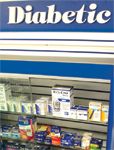Here comes an infusion of insulin delivery devices
There are a slew of new insulin delivery devices. What are the benefits and how do these devices work?
For about five million patients, the most effective diabetes treatment is insulin. In fact, most diabetes patients eventually do become insulin-dependent.
"Patients tend to fear that when it happens. It is part of our job to help them through the transition," said Jerry Meece, R.Ph., director of clinical services at Plaza Pharmacy & Wellness Center in Gainesville, Texas. Meece is a certified diabetes educator who has written extensively about insulin delivery systems.
Technology is improving

Meece is referring to the need for patients to learn how much insulin to take and how often, based on careful monitoring of their blood sugar. "Ninety-eight percent of the success of any patient is up to that patient," he said. "The remaining 2% of success is dependent on the help of healthcare professionals. That makes knowing delivery system options an important responsibility."

Insulin pens are the most popular alternative to syringes, although they are not nearly as popular in this country as they are in Europe.
"One of the main reasons for the difference is that in Europe, diabetes patients are usually treated by a diabetes care team, which often includes pharmacists who are familiar with delivery options," asserted Meece. "In this country, diabetes is mainly treated by primary care physicians, who are not as familiar with the devices."
The other reason insulin pens are more popular in Europe is that insurance reimbursement for the devices is more readily available.
But both those circumstances are changing. The popularity of insulin pens is on the rise, according to Meece. "It is the fastest-growing segment of the delivery system market, because it's convenient and more insurance companies are starting to pay for the devices," he said.
Primary care physicians are learning more about the devices as manufacturers are ratcheting up their marketing. The companies stress the fact that insulin pens provide ease of use without the complications of preparing insulin syringes from vials.
Reusable/disposable pens
Insulin pens fall into two groups: reusable or disposable. Reusable insulin pens are loaded with an insulin cartridge, generally sold separately in boxes of five. Cartridges hold 150 or 300 units of insulin. Depending on the size of a dose, a cartridge gives enough insulin to last for several days. The pen itself can be used for several years.
Disposable insulin pens come filled with insulin and are thrown away when they are empty. Most disposable pens hold 300 units of insulin and are sold in boxes of five. They are generally more convenient than reusable pens because patients do not need to load cartridges, but they cost more per unit.
Eli Lilly is now promoting a reusable new digital pen named HumaPen Memoir. The device displays a patient's last 16 doses on a tiny screen. Lilly also launched a pen in April that administers half-doses for children, and the company recently submitted an application to the Food & Drug Administration for a prefilled and disposable pen.